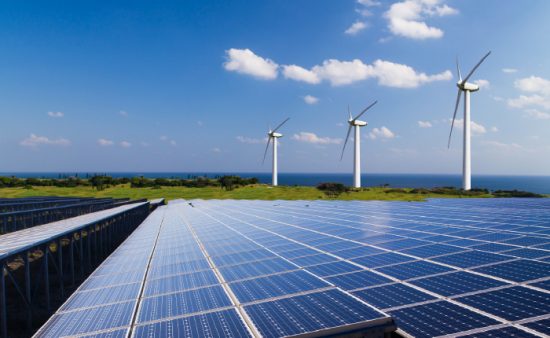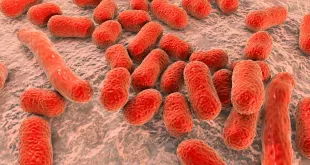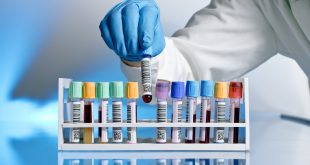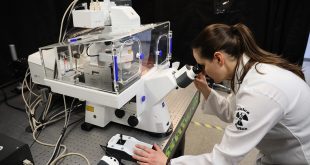CO2 capture technologies could be the key to reducing emissions
By Hermione Wilson
As part of its participation in the Paris Agreement, Canada has committed to reducing greenhouse gas emissions by 30 per cent below 2005 levels by 2030. In December 2016, the Pan-Canadian Framework on Clean Growth and Climate Change was adopted, a plan that seeks, among other goals, to reduce emissions across all industries and accelerate clean economic growth.
Of all the greenhouse gases, carbon dioxide (CO2) has been recognized as having the most detrimental effect on the atmosphere. “CO2 is a long-lived greenhouse gas,” says research scientist Vivek Arora. “If you put CO2 in the atmosphere right now, it’s going to stay there for 100, 200 years. Unlike methane, which gets destroyed in the atmosphere due to chemical processes, once you put CO2 in the atmosphere, there is no physical or chemical process in the atmosphere which will destroy it. The only way CO2 can be taken back up is by trees and by the ocean.”
Arora works with the Climate Research Division (CRD) of Environment and Climate Change Canada (ECCC) and has developed the land vegetation component of CRD’s Earth System Model (ESM). His job at the Canadian Centre for Climate Modelling and Analysis, a section of the CRD, is to grow virtual trees in a computer-generated climate model. “There is computer code that sees what the climate is like, how much it rains, what is the CO2 concentration in the atmosphere, and then the trees grow,” Arora says.
By factoring in historical and present-day data about the carbon cycle as it is expressed on land, Arora can use the model as a predictor of the future. Because of the complexity and biodiversity of land, different models tend to diverge from each other about what effect climate change will have on land, Arora says. “But they all agree on the fact that as climate warming continues, land will likely become a source of carbon. As CO2 increases in the atmosphere, for every additional CO2 increase, the vegetation takes up less and less carbon.”
Arora says as the land becomes a weaker carbon sink, it will be up to the oceans to take up the majority of CO2, yet the rising temperature will also slow down this ability.
According to the Paris Agreement, in order to respond to the threat of climate change, participating countries must be able to keep “a global temperature rise this century well below 2 C above pre-industrial levels and to pursue efforts to limit the temperature increase even further to 1.5 C” In order to do this, we need to be sucking more CO2 out of the atmosphere than we are putting in, Arora says. “There is a whole new industry which is thinking about how to suck up carbon from the atmosphere and turn it into things which we can use, and that carbon will be tucked away and removed from the system.”
Statistics Canada estimates 274,000 jobs were attributable to environmental and clean technology activity in 2016 and in a statement, Environment and Climate Change Canada estimate “the global market for clean energy and technology is worth trillions of dollars and growing rapidly”. This is why the federal government is investing in technology companies that are developing innovations and technologies with an eye on a cleaner, more environmentally proactive future.
One of the most promising, in terms of turning the tide of climate change and the effects of CO2 emissions, is carbon dioxide capture. According to International Energy Agency (IEA) around 15 per cent of CO2 emissions (or five billion tons) per year will be reduced using CO2 capture by about 2040, says Evan Price, CEO of CO2 Solutions.

The Quebec-based biotechnology company has developed a carbon dioxide capture technology that builds on older methods and makes them more efficient and environmentally friendly. “We take CO2 from an [industrial] gas stream and we extract the CO2 from there and provide it at the other end of our process as pure CO2,” Price says. CO2 Solutions is one of a few companies developing non-conventional CO2 capture technologies to be used in an industrial setting, he says. The traditional method of CO2 capture, which dates back to the 1930s, was never designed for large-scale capture and involves a highly toxic chemical called amine.
Flue gas at an industrial plant is run into a column or contactor, where a solvent designed to pull in CO2 makes contact with the gas itself. “When the liquid meets the gas, what is in the liquid is designed to pull in the CO2 and then it gets transformed into something that stays in the liquid,” Price says.
CO2 Solutions set about improving that process, both by making it less toxic, but also scaling it up and making it more efficient. The company uses a chemical called potassium carbonate in its CO2 capture process, instead of amine. The potassium carbonate, when added to water, simulates seawater but much more concentrated. “Potassium carbonate is low cost, it’s very stable, environmentally it’s very benign, and there’s nothing toxic about it, but it’s very slow,” Price says. “What that means is, as the gas goes up with CO2, the potassium carbonate is too slow to capture the quantity that we want. It would take a very tall column to capture all the CO2 because the exchange is just too slow.”
To accelerate the desired reaction, an enzyme that acts as a biocatalyst is added to the mixture. The enzyme, carbonic anhydrase, is present in animals and humans and functions as a regulator of CO2 in our bodies. Price calls the enzyme CO2 Solution’s “pixie dust”. Once the CO2 is pulled into the enhanced potassium carbonate solvent at the bottom of the contactor, it goes over to a stripping column where heat is applied and the reaction is reversed. The CO2 comes out of the solvent and is released in a pure form.
With the amine-based CO2 capture process, very high temperatures are required to break the bond between the amine solvent and the CO2 molecule, Price says. “In our case, the potassium carbonate doesn’t create such a strong bond, so the heat required is lower. Basically, with hot water, we get the potassium carbonate to release the CO2,” he says. Luckily for CO2 Solutions, there is no end of available hot water in an industrial plant and it costs them nothing.
When CO2 Solutions was approached by the Government of Quebec in 2018 about working together on carbon capture utilization and sequestration, the company focused on the utilization side, which it identified as an underdeveloped area. “We felt that there was a much greater potential for reusing this CO2 in the same way we reuse waste,” Price says. He points out that CO2 utilization applications are numerous: CO2 can be put into soda, used in greenhouses and for industrial use in water treatment plants, or transformed into metals like lithium carbonate.
“If you can imagine, on one industrial site we would have our CO2 capture unit, capturing CO2 from a flue gas stream, and then around it there would be pods of technologies that would take the CO2 and transform it into another product,” Price says. CO2 Solutions is now part of the Valorisation Carbone Quebec (VCQ) project, which began in 2017 and will run until 2022 and involves the Quebec government and CO2 Solutions is now part of the Valorisation Carbone Quebec (VCQ) project, which was launched in 2016 and will run until 2022, along with the Government of Quebec and Laval University. CO2 Solutions has also entered into agreements with several other companies to convert the CO2 it captures with its potassium carbonate-based process into different products.
Although much of VCQ’s efforts are based in Quebec, Price stresses that discussions are taking place around the world. “We see ourselves applying this technology particularly to large industries and helping them reduce their CO2 emissions,” Price says. “Today, I think there are about 37 million tons that are being reduced using [CO2 capture] systems, so we’re still a long long way away from where we have to be.”
 BioLab Business Magazine Together, we reach farther into the Canadian Science community
BioLab Business Magazine Together, we reach farther into the Canadian Science community





